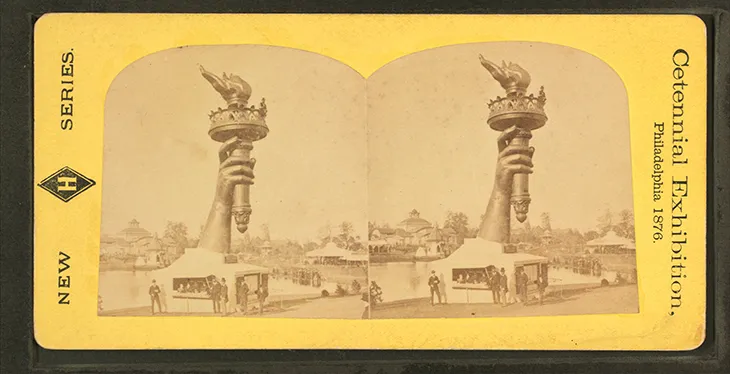The Statue of Liberty Arrived in New York in 350 Pieces
Luckily, she also came with an instruction manual
/https://tf-cmsv2-smithsonianmag-media.s3.amazonaws.com/filer/97/3e/973ec627-a0c2-41ce-85b8-5ac828a3a1a2/statueinworkshop_edit.jpg)
In 1885, some unique cargo arrived in New York City’s harbor — 350 pieces of copper and iron housed in 214 wooden crates all the way from France, writes Jen Carlson for Gothamist. With a handy instruction manual and some brawn, workmen would assemble these fragments into one of the city’s most iconic landmarks today, the Statue of Liberty.
A few crates of the statue had actually arrived a decade earlier. Lady Liberty’s arm and torch went on display at the Centennial Exposition in Philadelphia in 1876, and then at Madison Square Park to generate buzz and raise money for the construction project. Carlson writes that the sight looked not unlike that famous scene from the film Planet of the Apes, and she’s not wrong.

The rest of the statue arrived aboard the French naval vessel Isère on June 17, 1885. Once workers finished building her pedestal, construction on the statue itself began in the summer of 1886. At the time, Scientific American detailed the unique method of assembly devised by French sculptor Auguste Bartholdi. In 2011, Scientific American's Mary Karmelek dug up that old issue of the magazine, full of incredible illustrations. Karmelek writes:
While still in France, the statue’s shell was assembled and each piece was assigned a number or figure. Pieces that lined up next to each other had identical figures on sides which needed to fit together, creating a reassembly map. Each piece had a row of small holes on its edges, and when adjacent pieces lined up, their holes coincided so they could be riveted together.
Workers in Bartholdi’s studiot in France then broke the statue down into roughly 350 pieces and built wooden frames to help the pieces keep their shape during the voyage. However, because some pieces still warped during transport, they had to be refitted once they reached New York, notes Karmelek.
Then, each piece had to be secured with iron framework and supported with wooden beams. The intricate construction process delayed her inauguration from September to late October in 1886.
/https://tf-cmsv2-smithsonianmag-media.s3.amazonaws.com/accounts/headshot/Screen_Shot_2014-01-27_at_12.05.16_PM.png)
/https://tf-cmsv2-smithsonianmag-media.s3.amazonaws.com/accounts/headshot/Screen_Shot_2014-01-27_at_12.05.16_PM.png)